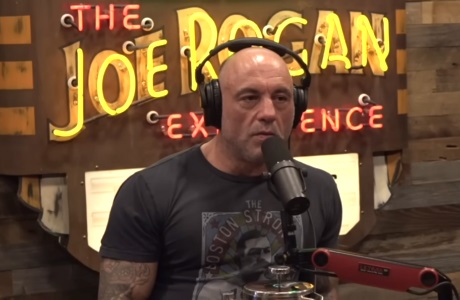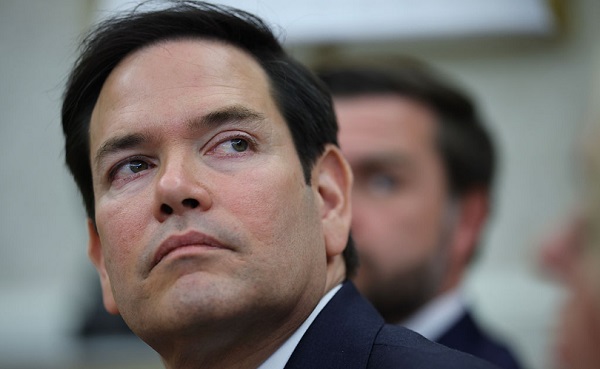International
Joe Rogan will interview JD Vance today after interview with Kamala Harris falls through

From LifeSiteNews
By Matt Lamb
Joe Rogan said he wanted to interview Kamala Harris but the interview fell through after her campaign demanded a shorter interview and that Rogan travel to her.
A potential interview between Vice President Kamala Harris and popular podcaster Joe Rogan appears to have fallen apart due to demands by the Democratic candidate. However, Rogan will interview Republican vice presidential nominee JD Vance today, just days after interviewing Donald Trump.
Harris asked that the interview last only one hour – in contrast, most Rogan interviews are at least two hours. Trump recently sat for a nearly three-hour-long episode. His campaign “jumped on the opportunity to get Vance on the podcast,” according to National Review. The episode “will be released later this week,” according to the National Review.
Furthermore, Harris demanded that Rogan travel to interview her, even though he conducts his episodes in his Austin, Texas, studio.
“Also, for the record the Harris campaign has not passed on doing the podcast,” Rogan wrote on X (formerly Twitter) on Monday. “They offered a date for Tuesday [Oct. 29], but I would have had to travel to her and they only wanted to do an hour.”
“I strongly feel the best way to do it is in the studio in Austin,” Rogan wrote. “My sincere wish is to just have a nice conversation and get to know her as a human being. I really hope we can make it happen.”
Also, for the record the Harris campaign has not passed on doing the podcast. They offered a date for Tuesday, but I would have had to travel to her and they only wanted to do an hour. I strongly feel the best way to do it is in the studio in Austin. My sincere wish is to just…
— Joe Rogan (@joerogan) October 29, 2024
Rogan is the most listened to podcaster in America. His interview with Trump has garnered nearly 40 million views on YouTube (despite a technical glitch hiding the episode at one point), 14 million views on X, and likely millions on Spotify, where he has around 15 million followers.
Trump’s appearance is part of a campaign push to appeal to young men, who may be more inclined to support the former president. This strategy is being pushed by his 18-year-old son, Barron Trump.
During the interview last Friday, Trump and Rogan discussed vaccines, 2020 election integrity issues, and “sex changes” for minors, as previously reported by LifeSiteNews.
Conservative commentators on X said Harris should do the interview. The vice president has often struggled in unscripted interviews, and CBS and its show “60 Minutes” have come under fire for heavily editing a rambling answer from Harris to make her seem more coherent (though the network denies it).
“America deserves 3 hrs with Kamala and Joe Rogan unscripted. Hope it happens and she stops trying to dictate the terms,” Turning Point USA CEO Charlie Kirk wrote on X, in response to Rogan. “You have a format. It works. She should stop trying to change it. Just like America.”
conflict
Marco Rubio says US could soon ‘move on’ from Ukraine conflict: ‘This is not our war’

From LifeSiteNews
Secretary of State Marco Rubio is calling the EU/UK bluff here because he knows without the U.S. the EU/UK will not commit to fight Russia.
Secretary of State Marco Rubio spoke to reporters in Paris on April 18 about the prolonged peace talks between Russia and Ukraine. However, a frustrated Rubio warned that the U.S. could “move on” from its involvement in negotiations to end the war if no progress is made “within a matter of days and weeks.” That’s the mainstream media narrative.
The non-pretending summary is that Ukraine, France, Great Britain, the EU, NATO, et al are all trying to retain their interests in the conflict. Russia has simple terms, but the war machinery controlled by the intel apparatus (CIA and EU) and the financial stakeholders in the EU region are unhappy. A frustrated Secretary Rubio says, make up your mind, if no deal – we’re done.
Having followed this very closely, here’s what “we’re done” likely means.
President Trump ends the U.S. side of the proxy war. President Trump pulls back all support for Ukraine, stops sending money, weapons, and, to the extent he can, intelligence to Ukraine. This opens the door for Russia to go full combat as the ground thaws, without concern for U.S. to engage.
The EU will have to step up with funding, intelligence, and war material to continue supporting Ukraine. Rubio is calling the EU/UK bluff here because he knows without the U.S. the EU/UK will not commit to fight Russia.
Remember that if no one does anything, Russia has already gained the ground they want and will just continue grinding western Ukraine to ever-expanding rubble. Factually, doing nothing is a big win for Russia, especially if Trump withdraws.
Reprinted with permission from Conservative Treehouse.
Business
Trump considers $5K bonus for moms to increase birthrate

 MxM News
MxM News
Quick Hit:
President Trump voiced support Tuesday for a $5,000 cash bonus for new mothers, as his administration weighs policies to counter the country’s declining birthrate. The idea is part of a broader push to promote family growth and revive the American family structure.
Key Details:
- Trump said a reported “baby bonus” plan “sounds like a good idea to me” during an Oval Office interview.
- Proposals under consideration include a $5,000 birth bonus, prioritizing Fulbright scholarships for parents, and fertility education programs.
- U.S. birthrates hit a 44-year low in 2023, with fewer than 3.6 million babies born.
Diving Deeper:
President Donald Trump signaled his support Tuesday for offering financial incentives to new mothers, including a potential $5,000 cash bonus for each child born, as part of an effort to reverse America’s falling birthrate. “Sounds like a good idea to me,” Trump told The New York Post in response to reports his administration is exploring such measures.
The discussions highlight growing concern among Trump administration officials and allies about the long-term implications of declining fertility and family formation in the United States. According to the report, administration aides have been consulting with pro-family advocates and policy experts to brainstorm solutions aimed at encouraging larger families.
Among the proposals: a $5,000 direct payment to new mothers, allocating 30% of all Fulbright scholarships to married applicants or those with children, and launching federally supported fertility education programs for women. One such program would educate women on their ovulation cycles to help them better understand their reproductive health and increase their chances of conceiving.
The concern stems from sharp demographic shifts. The number of babies born in the U.S. fell to just under 3.6 million in 2023—down 76,000 from 2022 and the lowest figure since 1979. The average American family now has fewer than two children, a dramatic drop from the once-common “2.5 children” norm.
Though the birthrate briefly rose from 2021 to 2022, that bump appears to have been temporary. Additionally, the age of motherhood is trending older, with fewer teens and young women having children, while more women in their 30s and 40s are giving birth.
White House Press Secretary Karoline Leavitt underscored the administration’s commitment to families, saying, “The President wants America to be a country where all children can safely grow up and achieve the American dream.” Leavitt, herself a mother, added, “I am proud to work for a president who is taking significant action to leave a better country for the next generation.”
-

 2025 Federal Election1 day ago
2025 Federal Election1 day agoBREAKING: THE FEDERAL BRIEF THAT SHOULD SINK CARNEY
-

 2025 Federal Election1 day ago
2025 Federal Election1 day agoCHINESE ELECTION THREAT WARNING: Conservative Candidate Joe Tay Paused Public Campaign
-

 2025 Federal Election2 days ago
2025 Federal Election2 days agoOttawa Confirms China interfering with 2025 federal election: Beijing Seeks to Block Joe Tay’s Election
-

 2025 Federal Election2 days ago
2025 Federal Election2 days agoReal Homes vs. Modular Shoeboxes: The Housing Battle Between Poilievre and Carney
-

 2025 Federal Election14 hours ago
2025 Federal Election14 hours agoMark Carney Wants You to Forget He Clearly Opposes the Development and Export of Canada’s Natural Resources
-

 International7 hours ago
International7 hours agoPope Francis’ body on display at the Vatican until Friday
-

 2025 Federal Election15 hours ago
2025 Federal Election15 hours agoCanada’s pipeline builders ready to get to work
-

 Business18 hours ago
Business18 hours agoHudson’s Bay Bid Raises Red Flags Over Foreign Influence

